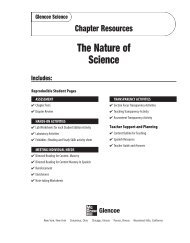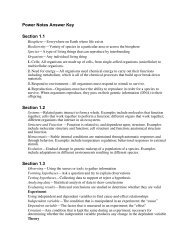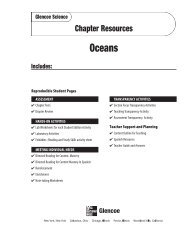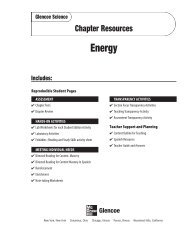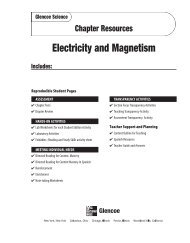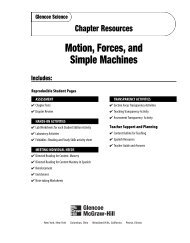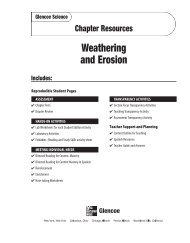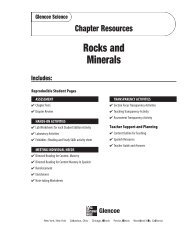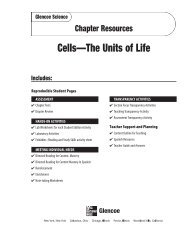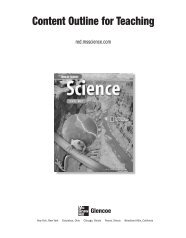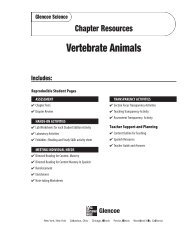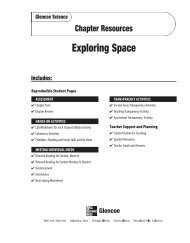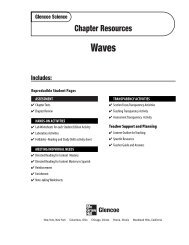Chapter 21 Resource: Ecology
Chapter 21 Resource: Ecology
Chapter 21 Resource: Ecology
- No tags were found...
You also want an ePaper? Increase the reach of your titles
YUMPU automatically turns print PDFs into web optimized ePapers that Google loves.
Content Outline for Teaching (continued)3. Another important abiotic factor is water.a. Some organisms are adapted for life in water.b. Water helps all living things carry out life processes, such as digestion.c. Water can also serve as shelter and a way to move from place to place.4. The abiotic factor sunlight is also essential to an ecosystem.a. The Sun is the main source of energy for most organisms on Earth.Teacher Support & Planningb. Energy from the Sun is used by green plants to produce food.c. Humans get energy by eating plants and other organisms that have fed on plants.E. Ecosystems change over time.DISCUSSION QUESTION:Think of a park near your home. What are some of the abiotic and biotic factors you would findin the park? Answers will vary. Students’ answers should include some of the following: abiotic—soil,rocks, water, items made by people, such as fences; biotic—animals, such as birds, insects, worms,people; plants, including trees, shrubs, and grass.Section 2Relationships Among Living ThingsA. Ecologists organize living things into groups to make it easier to study ecosystems.Copyright © Glencoe/McGraw-Hill, a division of the McGraw-Hill Companies, Inc.1. A population is a group of the same type of organisms living in the same place at the sametime.2. All of the populations that live in an area make up a community.3. Ecologists want to know the size of a population, where its members live, and how it is ableto stay alive.4. Ecologists determine population density by comparing the size of a population with its area.5. Ecologists use tags to study populations of animals that travel long distances.B. Populations do not have enough resources to grow larger and larger forever.1. Things that limit the size of a population are called limiting factors.2. Limiting factors include food, water, living space, and other resources.C. The most common interactions in a community are feeding interactions.1. Organisms will compete for any resource that is in limited supply.a. The greater the population size of an area, the greater the competition for resources.<strong>Ecology</strong>T3




